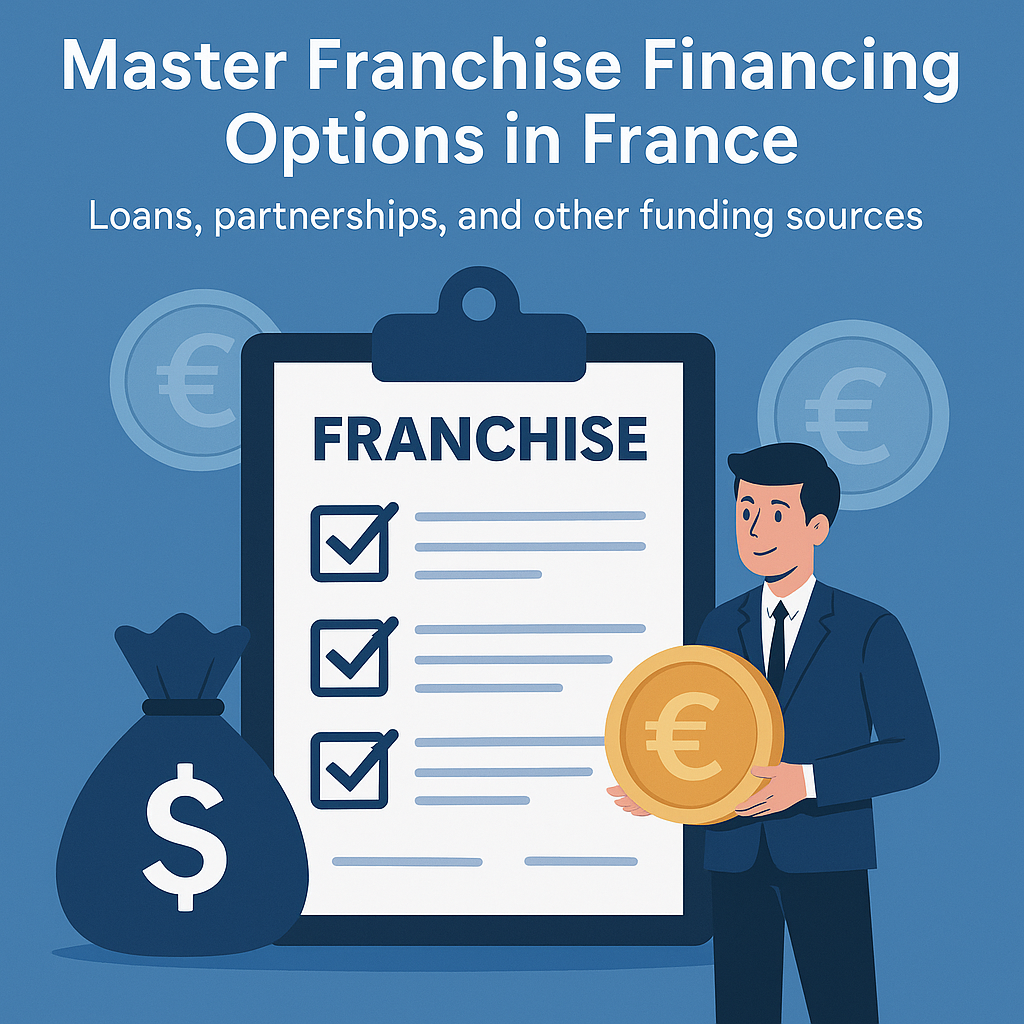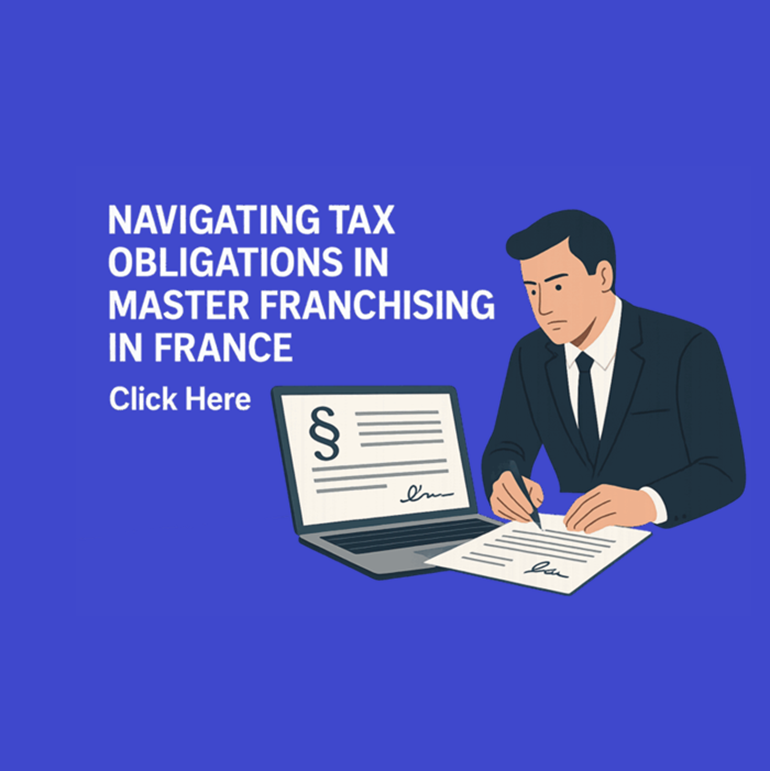Investing in a master franchise in France is a significant undertaking – one that promises the potential for substantial returns if executed well.
A critical question for any prospective master franchisee or franchisor is: What is the return on investment (ROI) and how do we measure success over time? This article offers a comprehensive guide to evaluating the ROI of a master franchise, explaining how to calculate ROI, what benchmarks to consider for long-term profitability, and which performance indicators signal a healthy franchise network. Written in a professional and analytical style, it aims to provide international investors, franchisors, and entrepreneurs with clear methodologies to assess a master franchise’s financial success in the French market. Understanding the factors that drive ROI – from initial costs to revenue streams – will help stakeholders set realistic expectations and make informed strategic decisions.
Master franchise ROI builds up over time as the network expands. In the image, blocks with franchise storefront icons are stacked upward and examined with a magnifying glass and charts, symbolizing the analysis of a growing franchise network’s performance. This reflects how investors must scrutinize financial metrics as they add units to ensure strong returns.
Understanding ROI in the master franchise context
Defining ROI: Return on Investment (ROI) is a fundamental metric that compares the profit earned from an investment against the amount of money invested. In the context of a master franchise, ROI typically is calculated as (Net Profit / Initial Investment) × 100% over a given period, or alternatively measured by the payback period (how many years it takes to recoup the initial investment). ROI matters because it indicates whether a franchise opportunity aligns with an investor’s financial goals and whether the risk is justified by the reward. A robust ROI means the business model is generating healthy profits relative to the capital put in, and it also correlates with how quickly the investor can start seeing positive returns beyond breakeven. It’s important to note that ROI for a master franchise might be realized over a longer period and in a more compounded way than for a single-unit franchise, due to the multi-layered revenue streams.
Master Franchise vs. Single-Unit Franchise ROI: A master franchise involves acquiring rights to an entire territory (e.g., country or region) and typically sub-franchising to individual unit franchisees. The initial investment for a master franchise is much larger than that for a single unit – it often includes a hefty master franchise fee, the cost of establishing a pilot operation, and resources for franchise sales and support. However, the potential returns are also significantly greater, since a master franchisee earns income from multiple units. In essence, you are leveraging a proven concept across an entire region. According to franchise industry experts, while a single outlet might yield a modest profit margin, a master franchise can generate multi-tiered income (initial franchise fees plus ongoing royalties from each unit), allowing successful master franchisees to far exceed the income of an individual unit operator. In the words of one franchise analyst, master franchising requires a larger upfront investment than single-unit ownership, but the potential returns are significantly greater – it’s essentially buying leverage to grow revenue across multiple units. Thus, evaluating ROI for a master franchise must take into account the scalability and cumulative effect of having many outlets contributing to the bottom line, versus one outlet’s performance.
Key Drivers of ROI: Several variables influence ROI in a master franchise, and understanding them is crucial for accurate evaluation. Firstly, the total investment encompasses not just the franchise fee but also the costs of setting up the franchisor infrastructure in your territory (staff, offices, training centers) and possibly opening corporate-owned units. This total outlay forms the denominator of ROI. On the return side, net profit will be driven by revenue from sub-franchise sales (territory fees paid by sub-franchisees), ongoing royalties on franchisee sales, and any other income (like supply chain mark-ups or training fees), minus the expenses of supporting the network (field support, marketing, administration). The time to profitability is another key factor – how quickly can the master franchise reach breakeven and start generating net positive cash flow? A shorter time to break even means a faster ROI accumulation. Efficient operations, cost control, and rapid network growth all shorten this timeline. Additionally, sector-specific factors play a role: different industries have varying profit margins and growth potential. For example, a master franchise in a high-margin service industry might achieve higher ROI percentages more quickly than one in a low-margin food & beverage sector, all else equal. Recognizing these drivers helps in modeling realistic ROI scenarios.

Calculating ROI and payback period
Estimating Initial Investment: To calculate ROI, start by determining the full initial investment required for the master franchise. This goes beyond the headline franchise fee. It should include all startup costs, such as the master franchise fee for the territory, the cost to establish at least one flagship outlet (which many franchisors require the master franchisee to open and operate to showcase the brand), costs of recruiting and training staff (for example, franchise sales managers, support coaches), office setup, legal fees, and initial marketing spend to attract sub-franchisees. Working capital should also be factored in – the business will need sufficient cash to cover operating expenses until the inflows from franchise sales and royalties ramp up. By summing all these elements, you get the total capital outlay which forms the baseline for ROI calculations.
Projecting Net Profit: Next, estimate the master franchise’s net profit over a given period (often year-by-year for the first 5 to 10 years). This involves forecasting revenue streams: how many franchises do you plan to sell per year, at what initial fee each? What royalties will you earn, based on the projected sales of those franchise units? A master franchise usually has an income model such as: initial fees from each new franchisee (which might range widely, e.g., €20k–€50k or more per franchisee depending on the brand), and a royalty percentage on each franchisee’s sales (commonly 5-10%). If the master franchisee also operates some units directly, include the profits from those units as well. Against these revenues, list ongoing expenses: the cost of providing support and training (travel, personnel salaries), marketing fund contributions, administrative overhead, and any local taxes (e.g., corporate tax, which will reduce net profit as discussed in the tax article above). Subtracting expenses from revenues yields the annual net profit (or loss) for each year in the projection. It’s prudent to build scenarios – conservative (slower franchise sales, lower franchisee revenues) vs optimistic – to understand the range of possible outcomes.
ROI Calculation and Payback: With initial investment and net profit projections in hand, ROI can be calculated. For example, suppose the total initial investment is €1,000,000. If after 5 years, the cumulative net profit (after all expenses and taxes) is €1,500,000, then the 5-year ROI would be (1,500,000 / 1,000,000) × 100% = 150% over five years, or an average of 30% per year (this rough average assumes linear growth; actual year-by-year ROI might ramp up over time). Another way to view ROI is through the payback period: how long until the initial €1,000,000 is fully recovered from net earnings. In this example, if the net profits by the end of year 3 sum up to €1,000,000, then the payback period is 3 years. Many franchise investors consider a payback period of around 3 to 5 years to be a strong indicator of a healthy investment. Indeed, a rule of thumb in franchising is that a desirable opportunity should allow recouping the initial capital within about 3-4 years of operation. A shorter payback means less risk and a higher annualized ROI. However, it’s worth noting that master franchises might have a slightly longer payback due to heavy up-front costs and the time needed to scale the network. When calculating payback, ensure that the cash flows used are after tax, since taxes can significantly affect net cash available to recoup investment.
Example: Let’s illustrate with a simplified example. Imagine a master franchise for a retail brand in France: the master franchise fee is €500,000. You plan to open one pilot store yourself costing €200,000, and incur €100,000 in other setup costs (staff, office, initial marketing), plus keep €200,000 as working capital. Total investment = €1,000,000. Now, assume in Year 1 you sell 5 franchises (each paying €30,000 initial fee = €150,000 revenue) and your pilot store and franchisees together generate royalties to you of €50,000 – total Year 1 revenue €200,000. Against that, your expenses (staff, marketing, overhead) might be €250,000 – yielding a slight loss in Year 1. In Year 2, you sell 7 more franchises (bringing cumulative franchises to 12), earning €210,000 in fees, and royalties increase (from more stores operating) to €150,000, so revenue €360,000. Expenses might also rise to €300,000 as you support a larger network. Year 2 net profit perhaps €60,000. By Year 3, cumulative franchises maybe 18; you get, say, €180,000 in fees (assuming fewer new sales as territory fills) and €300,000 in royalties, revenue €480,000, expenses €320,000, net profit €160,000. At that point, if we cumulate net results: Year1 (-€50k) + Year2 (€60k) + Year3 (€160k) = €170k net over 3 years – still below the initial €1M outlay. It might take until Year 5 or 6 before cumulative net profits equal €1M (the breakeven on initial investment). Once beyond that breakeven, ROI becomes positive and potentially accelerates as the network matures and ongoing royalties (which are essentially high-margin revenue) form the bulk of income. This exercise highlights that ROI for a master franchise often starts negative (as investments are made) and turns positive only after a few years of development. A hockey-stick shaped curve is typical: initially flat or negative returns, followed by steep growth as more franchisees come on board and royalties compound.
Benchmarks and financial performance indicators
Industry ROI Benchmarks: It is useful to compare master franchise ROI expectations with general franchise industry benchmarks to gauge performance. In franchising, acceptable ROI can vary widely by sector. Broadly speaking, annual returns (profit as a percentage of investment per year) around 10–15% are considered good in franchising. However, some industries see higher typical ROIs. For instance, an analysis of franchise financial performance suggests that food & beverage franchises often have relatively lower annual ROI in the range of 4%–10%, due to high operating costs and competition. In contrast, home services or B2B franchises (which often have lower overhead and scalable models) might achieve annual ROIs of 15%–25% or more. Retail franchises might fall somewhere in between, say 5%–12% annually on average. These figures are typically for single-unit franchise investments. A master franchise, by virtue of its multi-unit income, could exceed these, but also has the burden of higher initial costs. It would not be unreasonable to aim for, say, an average annual ROI of 15%+ after the initial ramp-up, which over time could translate to doubling the investment (100% cumulative ROI) in perhaps 5-6 years. Some master franchisees, especially in booming sectors or with exceptionally strong execution, might see even higher returns. But caution is warranted: overly optimistic projections can be dangerous. Franchisors in their disclosure documents often do not state ROI outright, so the onus is on the investor to analyze and perhaps speak with existing master franchisees in other markets to gather realistic benchmarks.
Key Performance Indicators (KPIs) for success: ROI itself is a result of many operational factors. To truly measure success, master franchisees should track various KPIs that drive ROI. These include: (1) Franchise Sales Rate – how many new franchise units are being opened per year. This affects initial fee revenue and the growth of the royalty base. (2) Same-Store Sales Growth – the average performance of each franchisee. If each unit’s sales increase year-over-year, royalties increase without needing more units. (3) Franchisee Profitability – a healthy network means individual franchisees are profitable and happy; if franchisees struggle, units will close (harming the master’s ROI) and selling new franchises will be harder. (4) Royalty Collection Rate – ensuring that franchisees are paying royalties on time and in full. (5) Cost of Support per Franchisee – measuring how much it costs the master franchisee to support each unit, and improving efficiencies as the network grows (e.g., leveraging technology or group training to reduce per-unit support cost). Another important KPI is the breakeven time for franchisees; if new franchisees are able to break even and reach profitability quickly, it indicates the concept is viable and the network can scale faster (benefiting the master ROI through more openings and fewer closures). Essentially, the master franchisee’s success is intertwined with franchisee performance: a network of thriving franchisees will yield strong royalties and minimal support firefighting, enhancing overall ROI.
Long-term equity value: While annual ROI and cash flow are vital, master franchise investors should also consider the equity value they are building. A successful master franchise can itself be sold in the future for a capital gain. The sale price of a master franchise (or the master rights back to the franchisor or to another investor) is often a multiple of the royalty stream or profits. Thus, building a large network with steady royalties not only gives you annual income but also creates an asset that might be worth several times your earnings if you exit. This capital appreciation is a component of ROI that isn’t captured in simple annual profit metrics. For example, if after 10 years you have 50 franchise units in your territory generating €2 million in royalties to you, and your profit is €1 million, a potential buyer might pay a multiple (say 3-5×) of that profit for the entire business, meaning €3–5 million sale price. Subtracting any remaining obligations, that sale price would substantially boost the overall ROI of your investment when viewed end-to-end. Therefore, one measure of success is whether you are increasing the franchise network’s equity value year by year – by growing revenues, maintaining strong franchisee relations, and keeping the concept’s brand value high in your market.
Strategies to Improve ROI
Accelerating Revenue Growth: The faster a master franchise can grow its revenue streams, the higher the ROI will be. Key strategies here include aggressive but careful franchisee recruitment and maximizing the performance of each unit. Master franchisees should develop a strong pipeline of qualified franchisee candidates – perhaps by investing in marketing campaigns or attending franchise expos. However, growth must be balanced with quality: selling franchises to undercapitalized or unsuitable franchisees can backfire and hurt ROI through failures. A prudent approach is to recruit diligently and possibly consider multi-unit franchisees who can open several locations, thereby increasing royalty income more rapidly. Additionally, providing excellent training and support from day one helps new franchisees ramp up sales quickly (and thus royalties). Some master franchisees implement mentorship programs where the best-performing franchisees assist new ones – boosting overall network performance.
Cost Control and Efficiency: On the cost side of ROI, master franchisees should strive for operational efficiency. Early on, it may be necessary to invest in a larger support team to maintain franchise quality, but over time, look for economies of scale. For example, as the network grows, certain functions can be centralized or automated: using franchise management software to handle routine communications, group training webinars instead of expensive one-on-one sessions, negotiated bulk purchasing deals that benefit franchisees (and potentially provide a rebate or additional income to the master franchisee). Leveraging technology can be a big enabler of efficiency. Modern franchise systems use intranet platforms, e-learning systems, and data analytics dashboards to support franchisees more effectively with less manual labor. By reducing the support cost per franchisee, the master franchisee can improve profit margins – thus improving ROI.
Monitoring and adapting strategy: Financial management should be ongoing. Regularly review your financial statements and KPIs to spot trends. If a particular expense line is growing faster than revenues (for example, maybe travel costs for supporting franchisees are eating into profits), consider solutions like regional training hubs or hiring local coaches to cut down travel. If certain franchisees are underperforming and dragging overall results, intervene early with support or remedial action – it’s cheaper to help a struggling unit turn around than to let it close and lose that royalty stream (not to mention incurring potential costs to replace it). Flexibility in strategy is key. For instance, if initial franchise sales are slower than expected (affecting ROI), one might adjust the development plan: perhaps open a few company-owned units to generate royalty-like income, or work with the franchisor to refine the marketing approach or even the financial incentives for new franchisees. On the flip side, if the franchise is more successful than anticipated, reinvesting profits into faster expansion (e.g., hiring more franchise sales staff or securing additional territories) could amplify ROI.
Maintaining Franchisee Satisfaction: A master franchise’s ROI is deeply tied to franchisee satisfaction and success. Content franchisees are more likely to open additional units and less likely to leave the system – both of which improve the master franchisor’s financial outcomes. This calls for maintaining a premium support and advisory relationship with franchisees. In a sense, although this article is about financial metrics, the softer side of franchising (relationships, support, trust) eventually shows up in the numbers. A network with high morale and strong collaboration will often outperform one with friction and neglect. Thus, investing in an annual franchise conference, recognizing top performers, and fostering a community can indirectly but powerfully boost ROI by driving network growth and stability.
Measuring success beyond ROI
Qualitative success measures: While ROI is a concrete metric, master franchise success isn’t solely financial. A legal and professional perspective on success also considers compliance, brand reputation, and sustainability of the business model. For instance, a master franchise might have a great ROI in the short term by overselling franchises, but if that leads to market saturation or legal issues (e.g., franchisees not getting proper support, resulting in disputes), that success is illusory and short-lived. Therefore, success should also be measured by the absence of significant legal disputes, the strength of the franchisor–franchisee relationship, and the brand’s market position in France. These factors contribute to long-term financial success. From a counsel point of view, if the network is growing steadily, franchisees are adhering to standards, and consumers recognize and patronize the brand, the master franchisee is building an enterprise with enduring value – a hallmark of success that goes beyond the immediate ROI percentage.
Adapting to market changes: The French market and consumer trends will evolve, and a successful master franchise is one that adapts and continues to thrive. Thus, another indicator of success is innovation and responsiveness. Is the master franchisee effectively introducing new products or services (as provided by the franchisor) to French franchisees? Are they ahead of regulatory changes or economic shifts (for example, adjusting the development schedule during economic downturns to help franchisees stay afloat)? This adaptive capacity often determines whether high ROI in early years can be sustained in later years. A truly successful master franchise investment is not a flash in the pan but a durable business that can weather cycles. Monitoring external factors and adjusting strategy accordingly will reflect in long-term ROI stability.
Exit strategy realization: Finally, measuring success includes evaluating if the master franchisee meets their end goals. Some investors enter master franchising with a planned horizon – say, build the network for 10 years and then sell the rights or the entire operation. Success for them would be achieving a sale at a favorable multiple, which validates the ROI in a very tangible way. Others might aim to keep the master franchise as a cash cow for decades. In either case, as the journey progresses, periodically valuing the business (through professional valuation or benchmarking against similar deals) helps measure if you are on track. If the valuation is climbing in line with the growth of the network and profits, it’s a strong sign of success.
Conclusion
Evaluating the ROI of a master franchise in France requires a blend of financial analysis and strategic foresight. By thoroughly calculating the total investment and projecting realistic net profits, an investor can determine potential ROI and payback period, setting a benchmark for success. As discussed, franchising benchmarks indicate that an annual return of 10–15% is healthy, with some sectors offering 20%+ under strong management. Master franchising, with its broader scope, has the potential for even greater cumulative returns – provided the franchise network flourishes. Key to achieving a strong ROI is focusing on the drivers: rapid yet sustainable franchise unit growth, efficient operations, and vigilant financial monitoring. Moreover, success should be measured not just in raw percentages, but in the quality and durability of the franchise network. High ROI that comes at the expense of franchisee success or legal compliance is short-lived; conversely, a well-supported network will yield high returns year after year, building substantial business value. In summary, a master franchisee in France should aim for a balanced scorecard: robust ROI figures backed by solid KPIs and network health indicators. With prudent planning and agile execution, the master franchise can turn into a profitable venture that meets or exceeds the investor’s expectations, delivering both financial rewards and a thriving business legacy.



